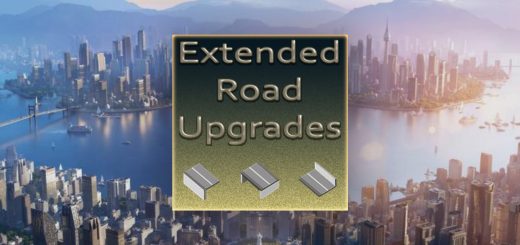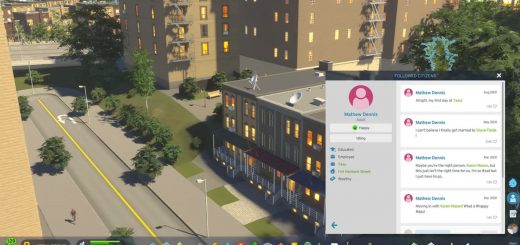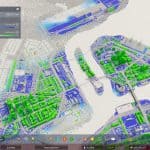
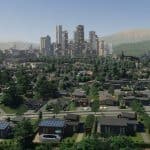
Cities Skylines 2: Land Value and Building Levels
Land Value serves as an indicator of how appealing a location is to residents and businesses. It disseminates through roads to the nearby vicinities of buildings, gradually uplifting the overall value of that area.
Residents typically appreciate spacious houses, nearby stores, essential services, schools and workplaces, and areas free from pollution. When they locate houses that meet their needs, they move in. If they are satisfied with their living conditions and have enough wealth, they can afford higher rent, which subsequently elevates the Land Value of the area. It’s crucial to understand that merely inserting all city services into a neighborhood doesn’t instantly boost the Land Value. Only when residents and companies have their requirements fulfilled, either through services or shopping options, will Land Value be influenced as they perceive the area as beneficial to their existence.
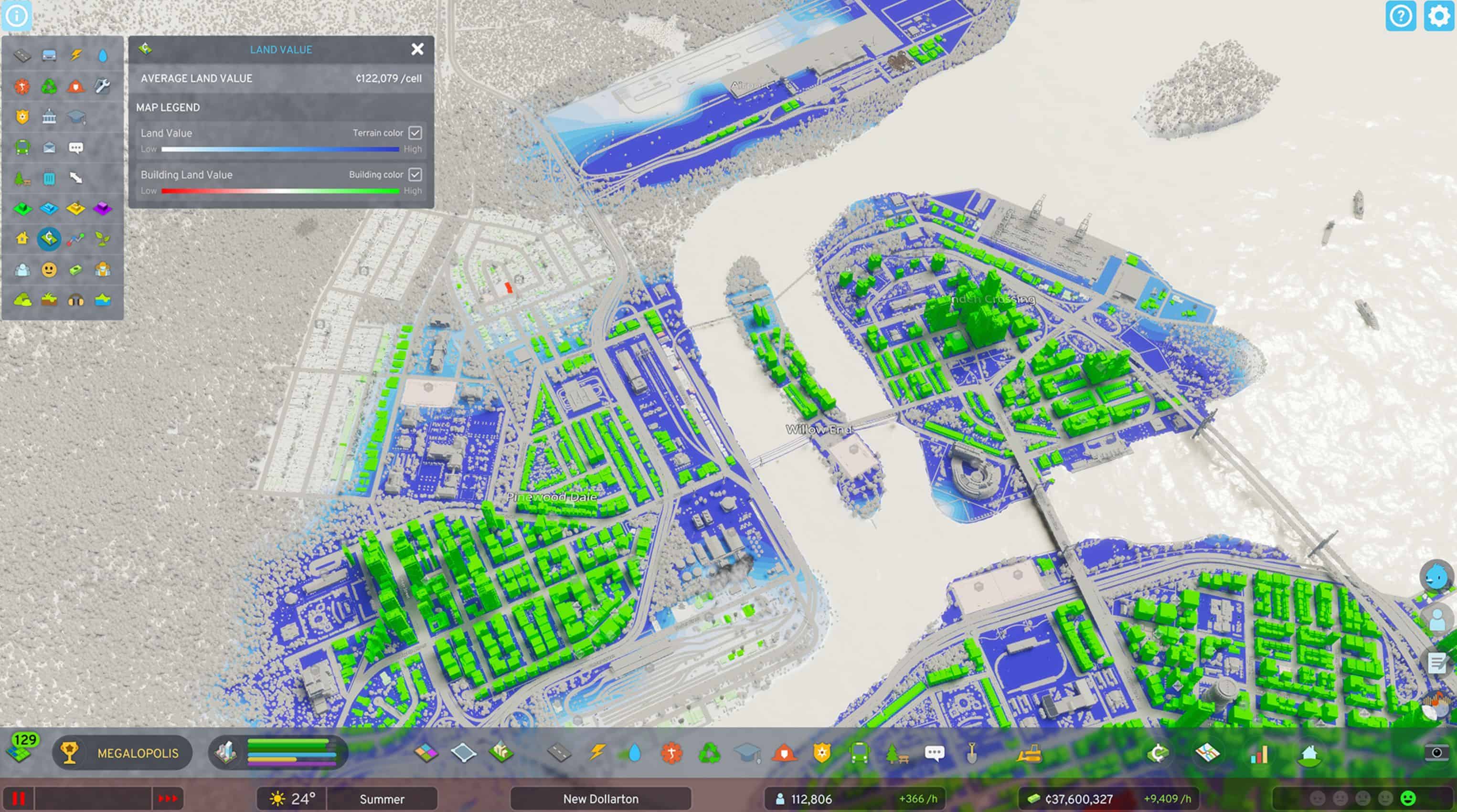
When the rent surpasses the maintenance cost of the building, the residents invest their surplus funds into improving the building, eventually leading to its leveling up. An elevated demand for a specific zone type can also augment the rent and hence, the Land Value, due to the greater influx of people than available living spaces.
To regulate the Land Value, if necessary, you can manipulate various residential taxes, either enticing or dissuading residents from moving in. Additionally, zoning more of the high-demand zone types can help balance the Land Value as the demand is satisfied. Limiting the required services and leisure options to maintain a low Land Value is also an option. Citizens can endure some deficiencies in meeting their needs while still leading fairly content lives.
If residents can’t or won’t pay higher rent, the rent lowers, which also impacts the Land Value around the building. Residents will relocate if the cost of living becomes too steep and they don’t feel their needs are met in the area they reside in, with some even exiting the city. If residents persistently can’t afford the rent, the building will begin to decay as no funds are allocated for basic upkeep. This exodus of residents results in more abandoned buildings, leading to a further decrease in Land Value. These vacant buildings may become shelters for homeless citizens, but due to continuous neglect, the building will eventually crumble.
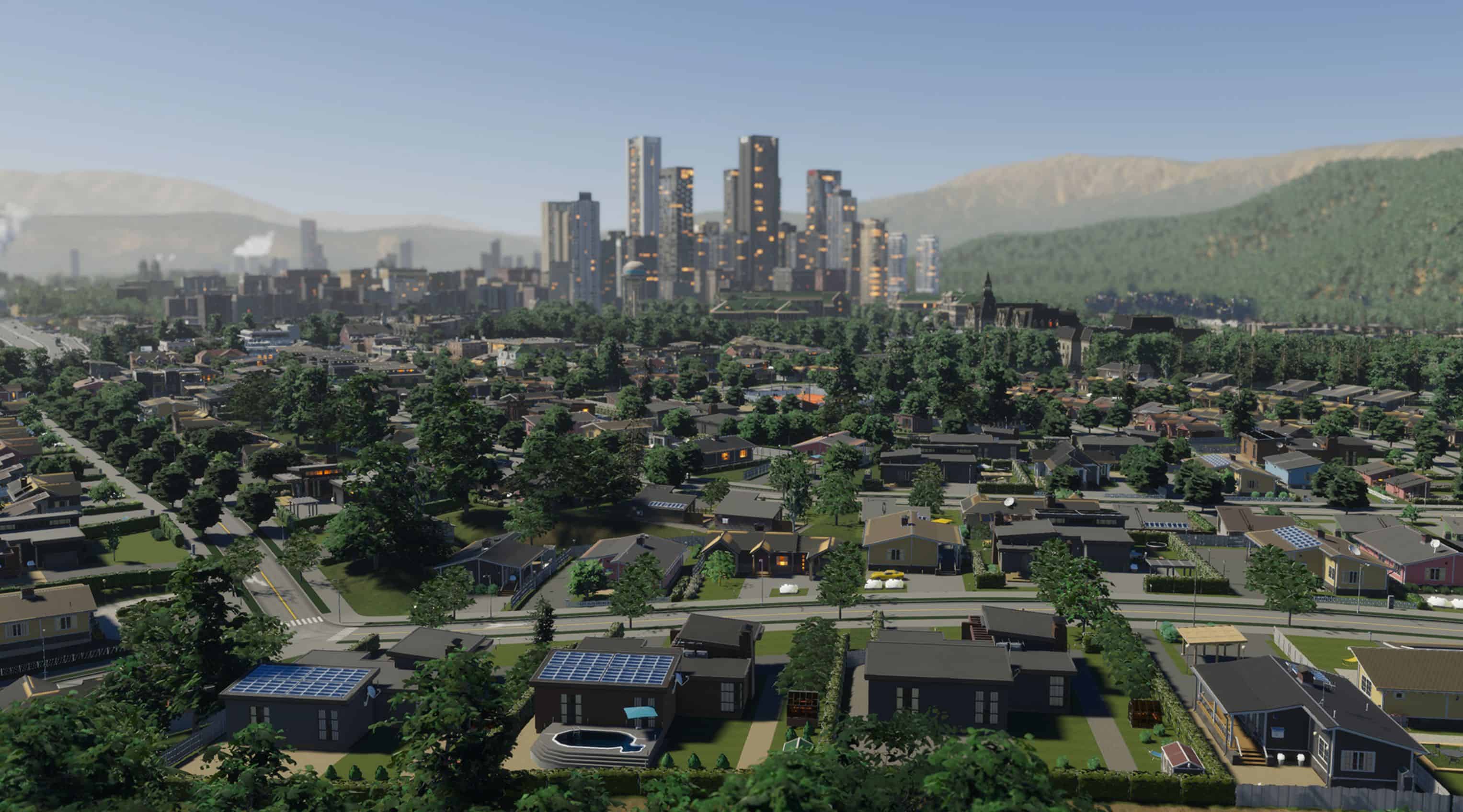
Land Value affects various residential zone types differently. Low-density housing areas can rapidly become pricey as Land Value rises. The increased Land Value impacts rent, and with low-density housing accommodating only one family per building, the increased rent entirely burdens the single household. Consequently, lower-income families often vacate these residential areas in search of new homes in medium-density housing areas. Medium and high-density housing areas are less impacted by increased Land Value as living costs are distributed among several households. Many residents prefer living in smaller, less expensive homes rather than struggling to pay rent.
Businesses partially determine suitable locations based on Land Value and rent, which is deducted from the company’s production value. However, businesses also consider location based on material transportation costs, including the costs for transporting materials to their location and transporting goods and products to resellers and customers. The lower these costs, the more apt a location is for the company. Like residential housing, businesses use any leftover funds from building maintenance costs to enhance the building and eventually upgrade it.
BUILDING LEVELS
All zoned buildings possess Building Levels ranging from 1 to 5. These levels signify the evolution of the building from a lower to a higher quality and indicate the wealth of its occupants. As the building level rises, its upkeep and rent increase. For residential buildings, per household electricity and water consumption decrease, and more apartments become available at levels 3 and 5 in medium and high-density residential buildings.
In commercial buildings, the per unit usage of electricity and water for goods or services sold decreases. Additionally, these buildings can produce goods and services quicker, allowing for lower consumer prices. This makes citizens prefer high-level commercial businesses over other options.
Similarly, in manufacturing and office buildings, the use of electricity and water to produce one unit of goods decreases. Higher-level buildings implement better utility practices, enhancing their production efficiency and generating less waste and pollution.
Buildings undergo visual transformations at every alternate level, signifying the increase in the building’s quality. Lower-level buildings possess an intentionally “budget-friendly” appearance, while higher-level buildings exhibit a more modern and intricate look.



